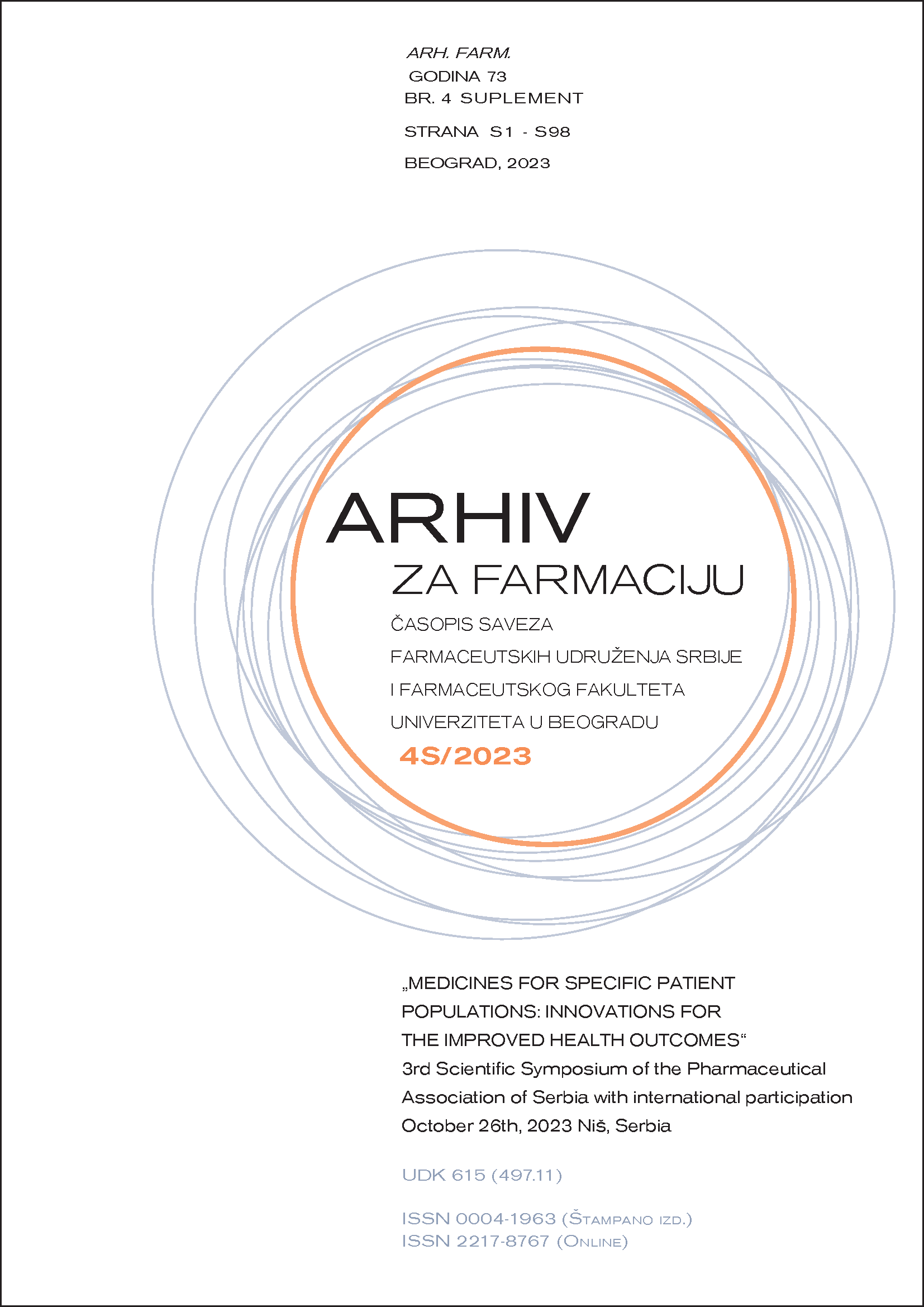EVALUATION OF ANTIBACTERIAL ACTIVITIES OF SYNTHETIC CHALCONE DERIVATIVES AND IN SILICO PREDICTIONS OF THEIR PHAMACOKINETIC AND TOXICOLOGICAL PROFILE
Abstract
Chalcones are biosynthetic precursors of secondary metabolites of flowering plants and they represent an important synthetic feedstock and intermediate in synthesis of bioactive heterocyclic compounds. The chalcone structural type is equally interesting in terms of biological activity, so this class of compounds is characterized by great therapeutic potential (1). A trend of increasing expansion of multiresistant pathogenic strains of microorganisms represents the global problem in the treatment of all types of infections. Toxicity of natural products to vertebrates is low, as is the possibility of developing resistance of microorganisms after long-term administration, which represents some advantage over conventional therapeutic methods. Numerous studies have confirmed the antibacterial, antifungal and antiviral effects of various chalcone derivatives, making these compounds excellent candidates for studies aimed at finding new antimicrobials (2). In this research, seven chalcone derivatives were synthesized according to the Claisen-Schmidt condensation method and a preliminary test of the antimicrobial activity of the synthesized derivatives by micro-dilution method was performed on two laboratory-controlled bacterial strains: Escherichia coli and Staphylococcus aureus. In tested concentration (1 mg mL-1), 3-bromo-4-hydroxy-5-methoxychalcone and 4,5-dimethoxy-2-nitrochalcone exhibited pronounced activity towards Staphylococcus aureus. In an in silico study which was performed using SwissADME platform and Osiris Property Explorer tool, active compounds were predicted to have favourable physicochemical properties, high gastrointestinal absorption, to pose no risk for mutagenic, tumorogenic, irritating, and reproductive effects. Therefore, they may be considered as good starting point for the development of potential antistaphylococcal agents.
References
1. Paliwal S, Pathak DP. Chalcones in the Therapeutics of Diabetes Mellitus. Sch Acad J Pharm 2018; 7: 392-401.
2. Zhuang C, Zhang W, Sheng C, Zhang W, Xing C, Miao Z. Chalcone: A Privileged Structure in Medicinal Chemistry. Chem Rev 2017; 117: 7762-810.

